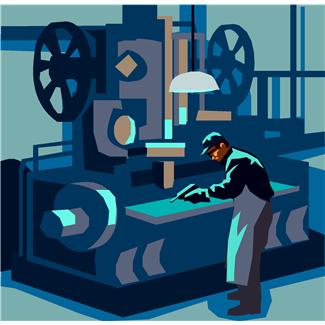 Real-time simulation is a tool that takes into account the up-to-the-minute status of your factory and predicts what’s likely to happen in the coming hours, days, and weeks.
Real-time simulation is a tool that takes into account the up-to-the-minute status of your factory and predicts what’s likely to happen in the coming hours, days, and weeks.
Knowing this, you can preempt problems such as WIP bubbles. The result is:
- Higher throughput
- Better on-time delivery
- Reduced cycle time
- Reduction in problems/headaches/firefighting
It also enables you to set more realistic production goals for your managers each shift.
How I do it
Using simulation software, I build a detailed model of the factory, including all the major machines and products in the factory. I create an interface with the MES (manufacturing-execution system software) to pull in up-to-the-minute WIP and machine status to the model. Regularly (say, weekly, daily, or even every shift) I download the current factory status into the model, run it, and predict factory performance in the coming hours, days, or weeks.
Use the model’s findings to preempt problems
Where problems are foreseen, actions can be taken to preempt them, such as changing a prioritization scheme at a machine, changing a machine setup, or shifting the timing of a PM. I can further simulate the effects of these corrective actions to gain confidence that the actions will actually solve the problem.
Use the model’s findings to set realistic production goals
The model’s output can also be used to set fair, realistic production goals for production managers in each area, each shift. Managers perform better knowing that they are being judged fairly. For example, a manager who will be receiving fewer upstream assemblies will not be dinged for having below-average moves. Similarly, a manager who meets moves goals knows that it was due to his/her performance–not the luck of having higher-than-average levels of WIP coming in, since that is already accounted for in the goal.


 Loading
Loading